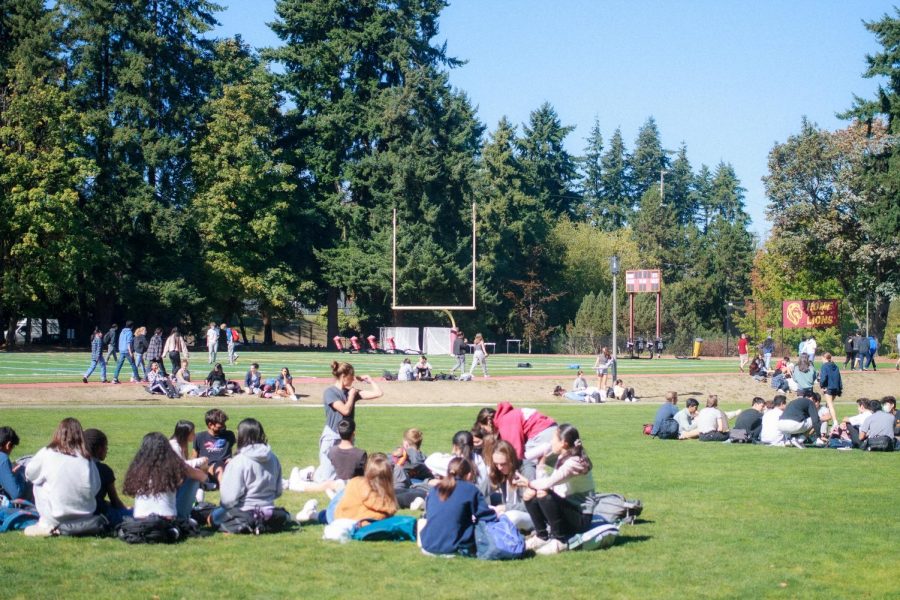Lakesiders Eating Lunch: A Reflection
Half of our school has never experienced an authentic Lakeside lunch. And while our chefs have brought back the meals that we feasted upon pre-quarantine, the eating experience is half the journey, and that half is missing: Nowadays, kids either sit in the WCC if they arrive early, or curse their class for going overtime again while they scan the quad for a place to eat. A large number of people end up sitting on wet grass. Luckier individuals find drier patches. A few coveted seats exist in the form of benches, bleachers, and concrete outcroppings, but all of these options fall prey to cold weather, and better options are limited or illicit. This results in a crowded WCC, eating in classrooms, and maybe even not eating at all.
Lakesiders didn’t always have to pick and choose from this sad, finite list. Before COVID, students were dispersed among a myriad of unique and inviting possibilities sprinkled around campus: some ate lunch in empty classrooms, others sustained themselves on paper plates in the refectory, and others still ate during class. Friends could convene comfortably, students could eat lunch whenever (even in class), and people didn’t have to eat on the grass, wet or dry. Lunch before COVID was a glorious, marvelous event.
And while these juvenile gripes about wet clothes ignore the much more serious and pressing concern that is COVID safety, we can whine about what could be and remember what was while we acknowledge the necessity of these precautions. That way, when the pandemic ends, the art form that is the Lakeside lunch may flourish again.
But there is more to the issue of lunch at Lakeside than the picture my melodrama paints, and always more solutions than problems. While students rush for any seating outside, the portables sit untouched. While students pat the ground in a vain effort to keep their pants dry, dozens of chairs lie untouched in the AAC. Solutions exist, and the campus is ready for them, adaptations while we wait for the pandemic’s end.

